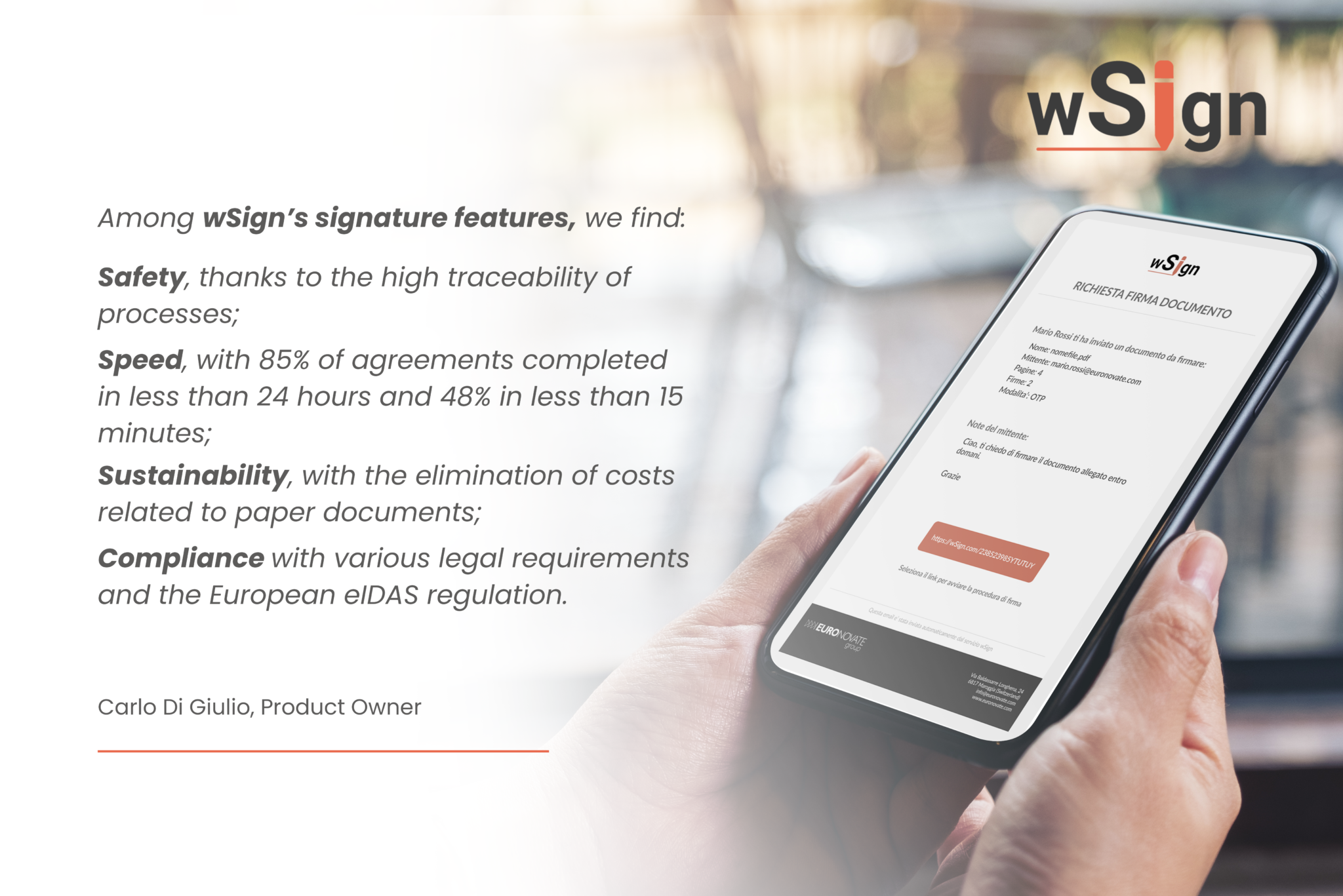Electronic signature and digital onboarding, set to grow in the future
Original Article by Fabio Di Pietro published in in Agenda Digitale on 07/14/2023
The electronic signature market is constantly growing, driven by the need to digitize processes and simplify the phases of collecting signatures and obtaining the consent of citizens/consumers. According to research by MarketsandMarkets, this is a market that reached 5.5 billion dollars in 2022 and is expected to be worth 25.7 billion dollars by 2027. This means that its increase will not depend, as has happened in the last two years, on a phenomenon such as the pandemic, which has made clear the need for solutions to support remote working. It will be dictated by increasingly felt needs for efficiency and innovation that concern all the various actors involved in the transformation of identification mechanisms. Without forgetting that for some years, before the arrival of Covid-19, European legislation had embarked on a path to define a reference framework in this area.
How many types of electronic signature are there?
With the EU regulation 917/2014 eIDAS (electronic IDentification Authentication and Signature) a common basis for secure electronic interactions between citizens, businesses and public administrations operating within the European Union has been contemplated. The regulation establishes what must be the means of electronic identification of natural and legal persons operating in Europe, as well as the rules concerning electronic transactions with legal value. Being a regulation, and not a directive, its application in all EU Member States did not require transposition by each country. In Italy, for example, it was the foundation on which the public administration created the SPID. Furthermore, eIDAS introduced the concept of Qualified Electronic Signature (FEQ) as the most advanced and secure form of digital signature which requires a certificate issued by an accredited service provider. The FEQ has the same legal value as the handwritten signature and can be used for commercial transactions of high economic value. It differs from the simple electronic signature (FES) which does not require particular security measures and is suitable for commercial transactions of limited economic value. As such, the FES does not have a probative feature in itself and therefore the assessment of its validity is exposed to litigation in court. A middle ground between these two signatures is the advanced electronic signature (FEA), governed by Legislative Decree no. 82 of 7 March 2005, which requires the use of more advanced authentication and encryption techniques than the FES.
Just a matter of compliance, but also of experience
It is not certain that for each transaction it is necessary to use one of these signatures, because it depends on the specific need of the company. It is also true that any supplier operating in this area must be able to suggest to the organization which type of electronic signature is most suitable for its types of transactions, also in light of the specific legislation affecting the company. Not only. The supplier must also accompany the customer on a path that takes into account the simplification of the onboarding processes. In other words, ensuring regulatory compliance is insufficient if the stipulation of a contract or access to a public administration service becomes an obstacle course for the end user. If we think of KYC (Know Your Customer), i.e. the standard set by financial institutions and other subjects to verify the identity of customers in order to prevent money laundering and terrorist financing, the reconciliation of these two aspects is evident. The Legislative Decree n. 231 of 21 November 2007, subsequently supplemented by Legislative Decree no. 90 of 25 May 2017, prescribes the obligation for subjects who belong above all to the finance and insurance world to verify the identity of customers and monitor their financial activities. This means that signature and documentation collection solutions must support various scenarios, trying to minimize the effort required by both the company and the customer. Whether it is a graphometric signature tablet or a remote onboarding management system, the former must then be able to integrate the phases following the acquisition into its flows, the latter must be able to enjoy an absolutely positive user experience.
From banking institutions to all economic sectors
Last year Deloitte and ABBL conducted a market study of awareness and adoption levels of electronic signature and digital onboarding technologies among a sample of 50 companies. For most of the respondents, the electronic signature is considered vital or of extreme interest. Overall, around 60% of the sample has already adopted an electronic signature solution, generally a mix of simple, advanced and qualified. On the other hand, on the digital onboarding front, while recognizing the need to implement it, only about 20% have already done so. These data may be indicative of a propensity to opt for one or the other, above all on the basis of the compliance objectives to be achieved. It should also be remembered that it is obviously not only banks and financial institutions that are now using electronic signatures and digital onboarding. Today any company, if it intends to innovate the customer journey offered to customers, can no longer ignore these tools. This is why retail and large-scale distribution, utilities, telco, public and private healthcare (just to name a few) use solutions of this type. If we take public health for example, the ASLs that have used electronic signature and digital onboarding systems for the administration of anti-Covid vaccines have greatly shortened citizens' waiting times. Similarly, beyond the circumstance triggered by the pandemic, access to treatment through dematerialized forms of booking contributes to determining undoubted advantages in terms of improvement in the patient experience, reduction of general costs, greater productivity of operators and lower environmental impact.
How to get along sustainability and convenience
The lower environmental impact, i.e. sustainability, is probably one of the aspects worth mentioning in conclusion. Electronic signature and digital onboarding not only favor remote working models, with the consequent reduction of travel and therefore of pollution connected to means of transport, but also drastically reduce paper consumption. And this both in the signature and documentation acquisition phase and in the subsequent filing and conservation phase. It has been calculated that a simple dental office, by replacing paper document management with digital one and introducing the electronic signature, could save on average between €5,000 and €10,000 a year. A savings calculated, in addition to the elimination of costs connected to the printer, also due to the optimization of time by the administrative staff. With a triple benefit, therefore, for the planet, the company and the patient. A smaller number of trees cut down is convenient for the company, which has lower costs, and generates more satisfaction in the customer, who receives a service faster.
Share this
You May Also Like
These Related Stories

Euronovate and Scytale Bring Advanced Digital Signature to Blockchain

Euronovate, digital trust solutions specialist

